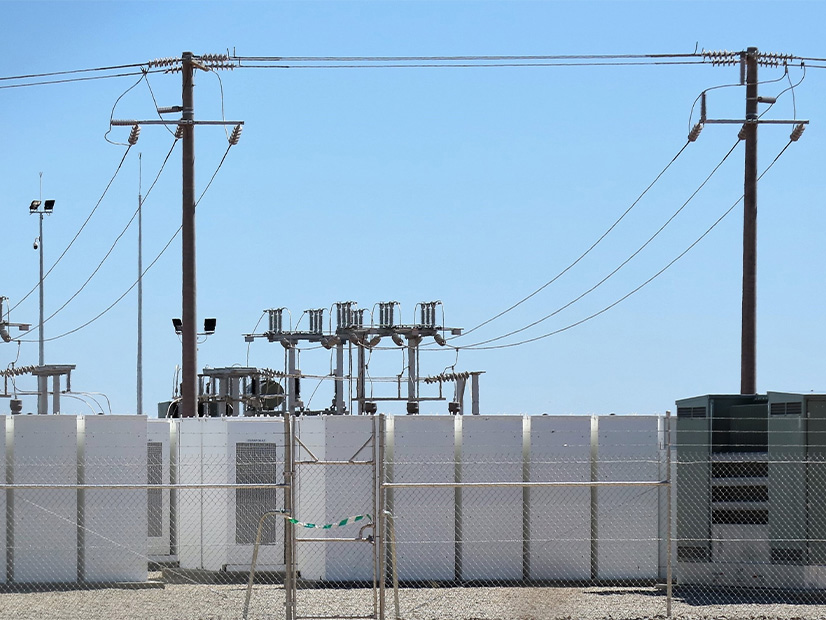New York has approved a framework to reach its 6-GW energy storage goal by 2030 and will take steps to ease factors that have limited its deployment to barely 400 MW of operational capacity so far (18-E-0130).
The Public Service Commission’s vote June 20 on a 6-GW roadmap is the culmination of a lengthy period of planning and review after Gov. Kathy Hochul doubled the goal from 3 GW.
If successfully executed as planned, the roadmap would create infrastructure that would reduce future investments needed in the grid, replace more of the high-emissions peaker plants and potentially meet at least 20% of the state’s peak load.
Storage is an indispensable part of the grid New York wants to build, in which intermittent wind and solar generation provide an increasingly large portion of the power portfolio. Department of Public Service staff estimate a need for 12 GW of storage by 2040, when the state reaches its statutory deadline for a zero-emissions grid, and the 2030 goal is seen as an important market signal needed to build momentum toward this.
The PSC order establishes an interim goal of 1.5 GW of storage by 2025.
Revenue uncertainty and rising costs have limited the storage buildout in the state. As of April 1, approximately 396 MW of storage was operational in New York; 581 MW was under contract; and 300 MW has been procured but not under contract.
The PSC’s order attempts to address this. Among the highlights of the roadmap:
-
- 3 GW of new short-duration (up to four hours) bulk storage will be procured through a new competitive index storage credit mechanism.
- 1.5 GW of new retail storage (up to four hours) and 200 MW of new residential storage (up to two hours) will be supported through expansion of existing regional incentive programs through the New York State Energy Research and Development Authority.
- At least 35% of program funds will support projects that benefit disadvantaged communities by targeting fossil fuel peaker plant emissions reductions; there will be specific carve-outs for the New York City region because of the concentration of peaker plants and disadvantaged communities there.
- Electric utilities must study the potential for storage projects to provide cost-effective transmission and distribution services not available through existing markets.
- Investment will be prioritized in the development of reliable, long-duration storage technologies.
- Prevailing wages will be a programmatic requirement for energy storage projects with a capacity of 1 MW or greater.
- Contract duration will be a maximum of 15 years for bulk lithium-ion battery projects and 25 years for other technology.
- A one-time inflation adjustment will be allowed.
- Retail storage projects will be capped at 20 MWh.
The New York Battery and Energy Storage Technology Consortium (NY-BEST) welcomed the news.
“The roadmap represents the largest investment in energy storage in the nation, with proposed investments estimated between $1.2 billion and $1.9 billion, distributed across bulk, retail and residential programs,” Executive Director William Acker said.
The trade group Alliance for Clean Energy New York also celebrated the move.
“This is an important milestone in our clean energy progress,” Executive Director Marguerite Wells said. “Battery energy storage plays a pivotal role in improving grid reliability, stabilizing electricity prices, harnessing the full power of renewable energy, reducing New York’s reliance on fossil fuels and transitioning to a modernized electric grid, and is an important part of reaching our clean energy and climate goals.”
“Long-duration energy storage is a vital resource in meeting peak loads as traditional peaking plants retire due to the” Climate Leadership and Community Protection Act, the Independent Power Producers of New York said. “However, batteries, as load modifiers, and not generators themselves, are risky due to the need to decide when to charge and when to discharge into the system. However, we still need new dispatchable resources in the future, whatever qualifies as net zero under the CLCPA, to keep the grid running during events like the heat we have had this week.”
The PSC vote was not unanimous. Commissioner Denise Sheehan, who previously was associated with NY-BEST, recused herself, and Commissioner John Maggiore concurred rather than vote to approve.
“Advancing the energy storage sector through this program once again positions New York as a leader for others to follow. That said, I’m skeptical about how we’re funding this program,” Maggiore said.
He specifically faulted the roadmap for relying on funding through utility bills and for benefiting some disadvantaged communities at the expense of others through the downstate carveouts.
The analysis performed for the roadmap estimates the total cost of the incentive program at $1.29 billion to $2.01 billion, a very wide range because of the uncertainty of wholesale energy and capacity payments.
It estimates 6 GW of storage by 2030 would have a net value in averted grid expenditures of $1.94 billion in net present value through increased delivery of renewables and decreased reliance on more expensive firm capacity. It did not attempt to quantify further societal benefits such as improved air quality.
In 2030, when the program cost is expected to be highest, monthly bill impact of the retail/residential storage incentives is estimated to range from an average of $1.07 for residential ratepayers to $22.43 for commercial ratepayers to $2,307.50 for industrial high-load factor ratepayers.
On top of that would be the bulk storage program impacts: $1.05, $22.14 and $2,277.13 per month for the same three classes of customers, respectively.




